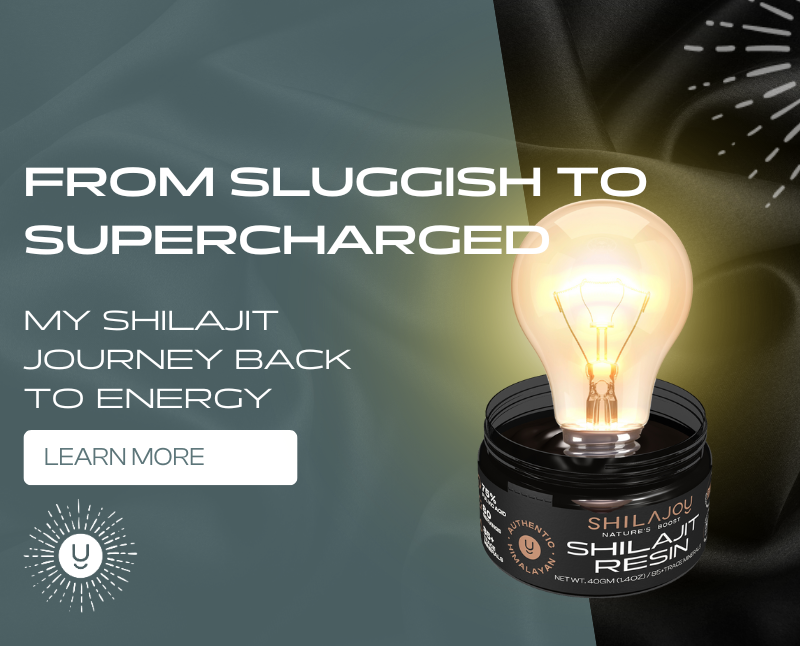How I Figured out What Shilajit Should Look Like (and Smell Like)
- Alex Clement
- Jun 15
- 3 min read
Updated: Jun 16
My Dear Health Enthusiasts,
A few years ago, I felt tired, weak and unambitious. I was not going to attribute the lack of energy and stamina solely to the aging process. I ate a varied diet, and was pretty consistent about exercise. I’d been trying to clean up my routine — sleeping better, cutting back on caffeine, trying to find something natural that actually gave me focus and energy. The problem was that my "get up and go, had got up and went". That’s when I fell into the black hole (or maybe I should say climbed the "black mountain" of shilajit. So I started digging in. And the more I learned, the more I realized that if I was going to try this, I wanted the real thing — not something watered down or mixed with fillers. Here's what I figured out along the way.
Shilajit Should Look Like....
First time I opened a jar of real Shilajit, it looked like this dark, sticky, glossy paste. It reminded me of tar, honestly. Weirdly satisfying to poke. The texture is thick, dense, and almost smooth — kind of like warmed molasses but with more grip.
If it looks grainy or crumbly, that’s probably a red flag. From what I learned, good Shilajit is soft enough to scoop with a spoon, but firm enough to hold its shape.
The Smell Test
Okay, this one caught me off guard. Authentic Shilajit has a strong smell. Earthy, smoky, almost like the forest floor after rain. My wife said it smells like hiking boots and minerals (not wrong). But here’s the thing — it smells natural. Not chemically. Not sweet. If you open a jar and it smells like perfume or plastic? Probably not the real deal.
Taste? Definitely Not Delicious, but That's Not the Point
Let me be real: the first time I tasted it, I made a face. It’s bitter. Earthy. Slightly metallic. But now I actually kind of like it — it’s got that “you know it’s doing something” taste. If you find shilajit that tastes sweet (or even salty) it's likely because they've added other stuff to improve the taste. Real shilajit doesn't need additives. It's supposed to taste like mountains, not candy.
The Fire & Water Test
One thing that helped me feel more confident: watching it dissolve. I take a pea-sized bit, drop it into warm water or tea, and just let it melt. It should dissolve clean, without chunks, and turn the water a dark, tea-like brown. That richness in color? It’s because of fulvic acid and minerals — the good stuff you’re after.
What's the Fire test?
How to Do It:
Take a small amount of Shilajit (pea-sized).
Hold it with tweezers or place it on a metal spoon.
Use a lighter or candle flame to apply direct heat underneath it.

The fire test won’t give you lab-grade confirmation, but it's a useful traditional tool. When combined with smell, texture, taste, and lab reports, it can help you confirm whether your Shilajit is truly natural and unadulterated.
Final Thoughts — I'm not a Guru, Just a Guy Who Tried It
I’m not here to tell you Shilajit is a miracle cure. But for me, it’s been one of the better supplements I’ve added to my routine. I take a little each morning with warm water — and I actually feel the difference. More grounded, better focus, less of that afternoon brain fog. Could be placebo. Could be the minerals doing their thing. Either way, I’m sticking with it.
If you're curious and want to try real Shilajit, just be careful what you’re buying. Look for proper testing, real texture, and a company that stands behind it's product! At Shilajoy, we use 3rd party testing facilities and you can look up each batch number for purity, and heavy metal testing results. Have any qustions? Reach out!
Cheers!

Disclaimer: The information provided on this blog is for general informational purposes only and is not intended as a substitute for professional medical advice, diagnosis, or treatment. Always seek the advice of a qualified healthcare provider with any questions you may have regarding a medical condition or treatment.




Comments